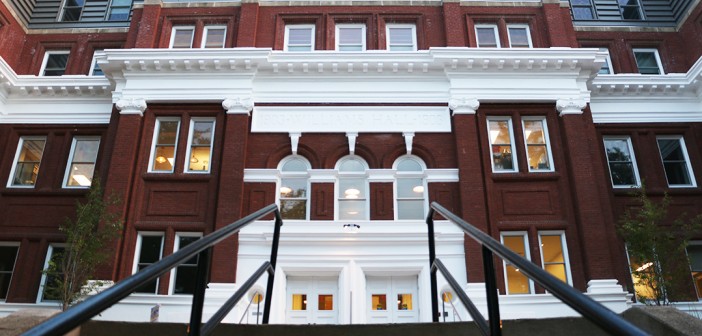Leadership in Energy and Environmental Design is a certification that focuses on building around green concepts which helps design buildings to save energy resources while improving human wellness.
To receive LEED certification, buildings must achieve prerequisites and earn points in seven different rating system categories: sustainable sites, water efficiency, energy and atmosphere, materials and resources, indoor environmental quality, innovation in design and regional priority.
There are four levels of building certifications: certified, silver, gold and platinum. These performance credits are based on points given for potential environmental impacts and human improvements.
According to the U.S. Green Building Council website, “LEED is the most popular and widely used green building rating system globally. There are more than 72,500 LEED building projects located in over 150 countries and territories (as of August 2015).”
There are many benefits in following the LEED certification standards. According to the USGBC website, “LEED Gold buildings in the General Services Administration’s portfolio generally: consume 25 percent less energy and 11 percent less water, have 19 percent lower maintenance costs 27 percent higher occupant satisfaction, 34 percent lower greenhouse gas emissions.”
Lehigh’s first LEED certified building, STEPS, achieved gold status in 2011. The second building, the Ben Franklin TechVentures addition on Mountaintop, achieved gold in 2013. Recently, Lehigh applied to have Williams Hall silver certified. If this is approved, this will be the third LEED certified building.
Cameron Healey, ’18, Julie Taylor, ‘16, and Molly Fitzwilliam, ’16, are doing a project in Albert Wurth’s Politics of the Environment class wherein they compare Lehigh’s environmental conservation efforts to other higher learning institutions. They are also focusing on compiling the energy consumption in the forms of electric, gas and water, throughout the STEPS building to analyze the current efficiency.
The group reported they are interested in this project because “this year Lehigh is celebrating its sesquicentennial, (and the board of trustees and administration are evaluating every aspect and finding ways to improve Lehigh.”
“This a push to update older building on campus,” the group said. “This is a perfect opportunity to look not only at older buildings, but look at every building on campus and analyze the energy efficiency of each building.”
Healey found that Northwestern University has eight certified LEED buildings, while Lehigh currently has two LEED certified buildings.
According to Lehigh’s sustainability officer, Delicia Nahman, there are different versions of the LEED certification, and there is no expectation to require buildings under previous building criteria’s to follow the updated LEED versions.
Vice president of finance and administration, Patricia Johnson, said future constructions occurring on campus require decisions to be made regarding whether Lehigh has the money to apply for LEED certifications.
“Many buildings are gift, internal reserves, and then the university financial component. It cost 5 million dollars to build the police station,” Johnson said. “The police building had a different funding structure, which is why it will not apply for LEED certification.”
Nahman explained the USGBC created a LEED check list rating system to help campus planners, and architects make decisions to use better resources and follow the standards of USGBC without receiving the plaque. The plaque itself is a financial expense, she said, as the price of LEED certification requires an extra 3 to 6 percent of the overall cost for recognition.
The university as a whole is dedicated to having green and efficient buildings, including ones that reduce energy and water usage, as well as green house gas emission and maintain indoor air quality, according to Nahman.
“These sorts of standards are the types of buildings we will build in the future,” she said. “Most universities, and Lehigh, will need to build energy efficient buildings comparable to LEED silver certification, regardless if the university applies for LEED certification.”






Comment policy
Comments posted to The Brown and White website are reviewed by a moderator before being approved. Incendiary speech or harassing language, including comments targeted at individuals, may be deemed unacceptable and not published. Spam and other soliciting will also be declined.
The Brown and White also reserves the right to not publish entirely anonymous comments.